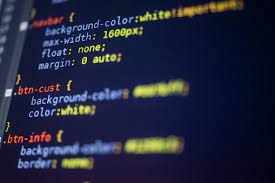Honored to be recognized among the 𝟭𝟰 𝗟𝗲𝗮𝗱𝗶𝗻𝗴 𝗦𝗔𝗣 𝗖𝗼𝗺𝗺𝗲𝗿𝗰𝗲/𝗛𝘆𝗯𝗿𝗶𝘀 𝗘𝘅𝗽𝗲𝗿𝘁𝘀 by EchoGlobal

Honored to be recognized among the "𝟭𝟰 𝗟𝗲𝗮𝗱𝗶𝗻𝗴 𝗦𝗔𝗣 𝗖𝗼𝗺𝗺𝗲𝗿𝗰𝗲/𝗛𝘆𝗯𝗿𝗶𝘀 𝗘𝘅𝗽𝗲𝗿𝘁𝘀" by EchoGlobal! Grateful to be featured by EchoGlobal as one of the 14 Hybris Experts shaping the SAP Commerce space! Working with SAP Commerce over the years has taught me that building scalable, reliable platforms is never a solo effort. It takes experimentation, late nights, lessons learned the hard way, and a community that's always growing and improving. A big thank you to the EchoGlobal team for the recognition. And to everyone in the ecosystem pushing boundaries, asking the right questions, and helping this space evolve, let’s keep sharing and building together. 𝗜𝗳 𝘆𝗼𝘂'𝗿𝗲 𝘄𝗼𝗿𝗸𝗶𝗻𝗴 𝗼𝗻 𝘀𝗼𝗺𝗲𝘁𝗵𝗶𝗻𝗴 𝗶𝗻𝘁𝗲𝗿𝗲𝘀𝘁𝗶𝗻𝗴 𝗶𝗻 𝗦𝗔𝗣 𝗖𝗼𝗺𝗺𝗲𝗿𝗰𝗲 𝗼𝗿 𝗱𝗶𝗴𝗶𝘁𝗮𝗹 𝗮𝗿𝗰𝗵𝗶𝘁𝗲𝗰𝘁𝘂𝗿𝗲, 𝗜’𝗱 𝗹𝗼𝘃𝗲 𝘁𝗼 𝗰𝗼𝗻𝗻𝗲𝗰𝘁 𝗮𝗻𝗱 𝗰𝗼𝗻𝘁𝗿𝗶𝗯𝘂𝘁𝗲. 14 Hybris Experts list by EchoGlobal

